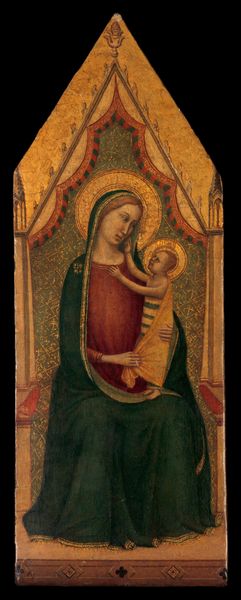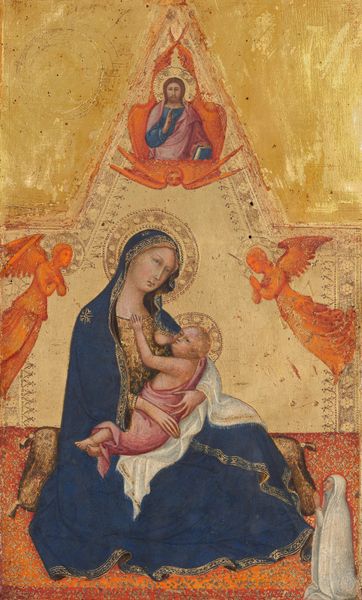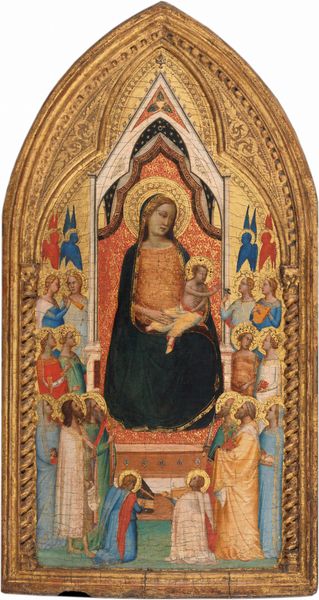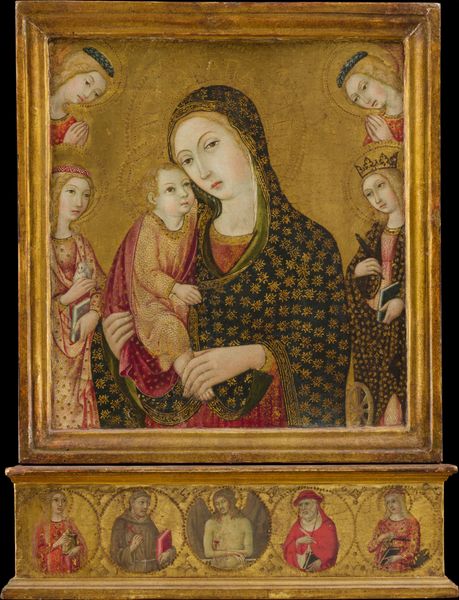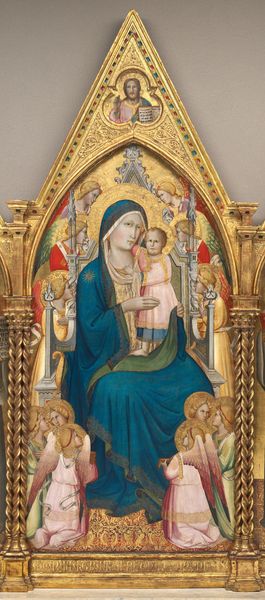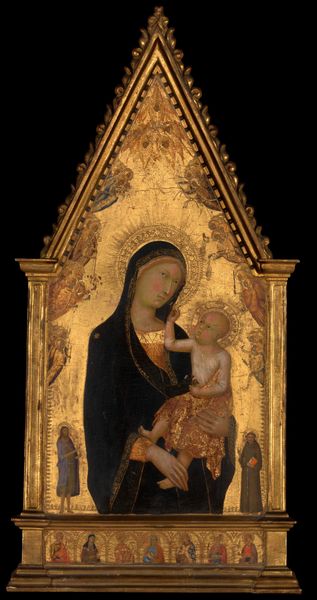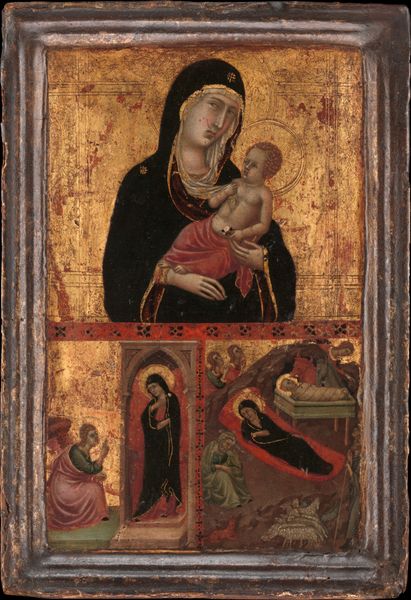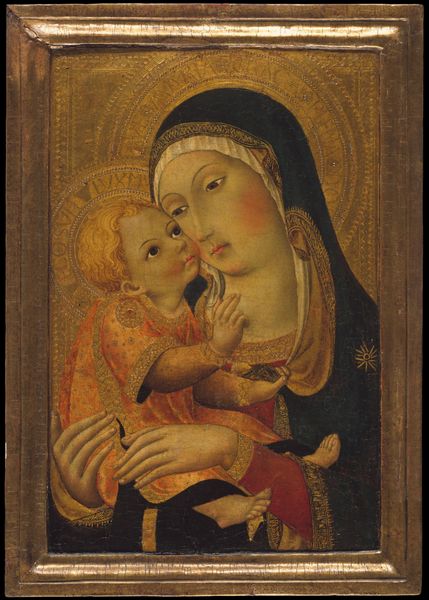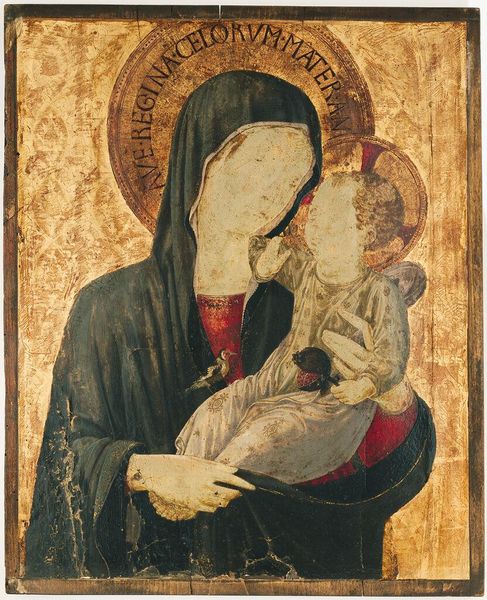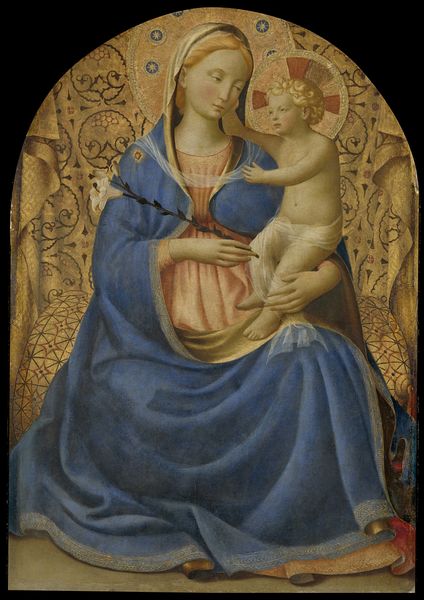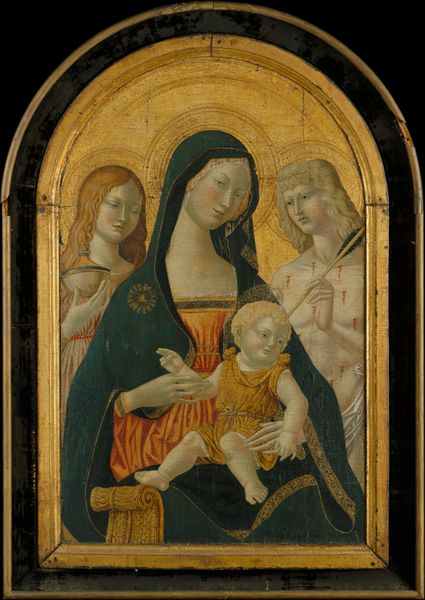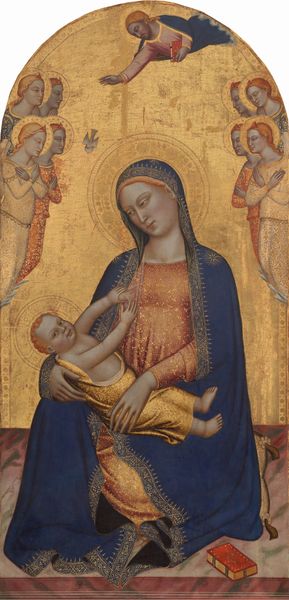
tempera, painting
#
portrait
#
tempera
#
painting
#
figuration
#
italian-renaissance
#
early-renaissance
#
miniature
Dimensions: height 76.5 cm, width 53.5 cm, height 100.5 cm, width 60.5 cm, depth 9.5 cm
Copyright: Rijks Museum: Open Domain
Curator: Here we see Agnolo Gaddi’s “Madonna of Humility,” a tempera painting from about 1390, a gorgeous piece exemplifying the Italian Renaissance. Editor: What immediately strikes me is the contrast in textures—the almost metallic gold of the background and dress, set against the softer drapery and skin tones. The piece possesses such serene gravity. Curator: Yes, "Madonna of Humility" marks a shift. The traditional, enthroned Madonna is reimagined in a more earthly context, seated on a cushion, a symbol of her accessibility and closeness to the people. This iconography really gained momentum in the 14th century. Editor: Note the intimacy he achieves by positioning mother and child so closely. See how the angels overhead are gently placing a crown over Mary's head. The use of gold leaf to depict divinity enhances this tenderness. But do you see how her gaze seems heavy, almost sorrowful? Curator: It's a compelling point. The solemnity hints at a knowledge of Christ's fate, casting the maternal bond in a poignant light. The piece also speaks to the rising influence of Marian devotion during the late medieval period—the Madonna becomes an intercessor, a figure of comfort during times of upheaval. Editor: Structurally, there's an interesting balance here. The architectural frame both contains and elevates the figures within. It’s creating a sense of sacred space that adds to the sense of reverence, wouldn't you agree? Curator: Precisely, and thinking about the commissioning context, such paintings often played a crucial role in private devotion, serving as focal points for prayer and contemplation within wealthy households. Editor: Considering the artwork, I am struck by how successfully it blends formal elegance with raw human emotion—such a contrast. Curator: Absolutely, it's a window into both the artistic and religious sensibilities of its time, inviting us to reflect on the evolving role of the Virgin Mary within society.
Comments
rijksmuseum about 2 years ago
⋮
Agnolo Gaddi was one of the leading painters in late 14th-century Florence. He worked in the direct tradition of Giotto, the founder of Florentine painting. This panel shows the Virgin seated humbly on a richly decorated cushion while nursing the Christ Child. This scene is typical of the devotional art of this period.
Join the conversation
Join millions of artists and users on Artera today and experience the ultimate creative platform.
